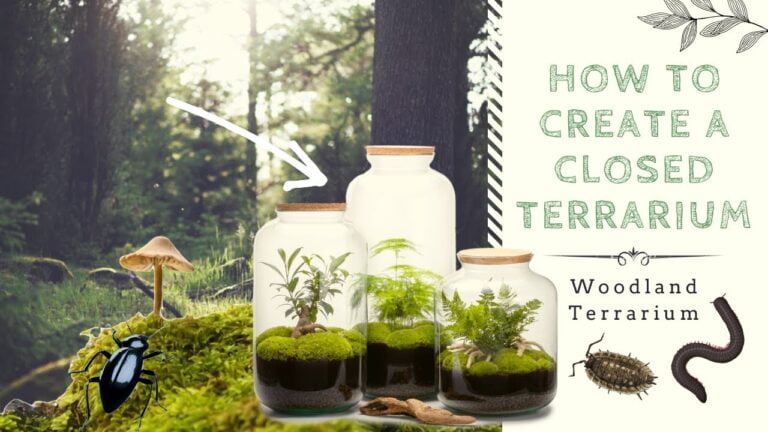Are you looking to add some greenery to your space while also being environmentally conscious? Look no further than sustainable terrarium planting! This eco-friendly gardening trend is a great way to bring the beauty of nature indoors, all while reducing your carbon footprint. Whether you’re a seasoned plant enthusiast or a beginner looking to add some greenery to your home or office, sustainable terrarium planting is a fun and easy way to create a lush and low-maintenance mini ecosystem. Join us as we explore the ins and outs of sustainable terrarium planting and learn how you can create your own thriving, eco-friendly indoor garden.
Are terrariums eco friendly?
Furthermore, terrariums require minimal maintenance and can thrive in low light conditions, making them a versatile and sustainable option for indoor gardening. With the right selection of plants and proper care, terrariums can create a beautiful and natural ambiance in any living space while also contributing to a healthier environment.
In conclusion, terrariums are not only a visually appealing decorative option but also an eco-friendly choice for those looking to bring a touch of nature into their homes. By creating a self-sustaining ecosystem, terrariums help conserve water and reduce waste, making them a responsible and sustainable way to enjoy indoor plants. So, next time you’re considering adding some greenery to your living space, consider a terrarium for a beautiful and eco-conscious solution.
Which type of terrarium can last longer?
Closed terrariums are a low-maintenance option for those looking to add some greenery to their space without the constant upkeep. With their self-sustaining nature, they require less watering and care compared to open terrariums. This resilience allows them to thrive even in less-than-ideal conditions, making them a durable choice for busy plant enthusiasts.
The closed terrarium’s ecosystem acts as a natural buffer, providing a safety net for the plants within. This buffer allows the terrarium to handle the natural decay of old plants without disrupting the overall balance of the system. By maintaining a stable environment, closed terrariums can sustain themselves for longer periods of time, requiring minimal intervention from the owner.
In contrast to open terrariums, closed terrariums are better equipped to withstand environmental factors such as underwatering. The sealed environment helps to retain moisture and create a self-sustaining cycle within the terrarium. This makes closed terrariums a reliable and resilient option for those looking to enjoy the beauty of nature without the constant worry of plant care.
Are terrariums truly self-sustaining?
Terrariums are indeed self-sustaining ecosystems, thanks to the photosynthetic abilities of the plants within. By absorbing carbon dioxide and releasing oxygen, the plants create a self-contained environment that can thrive without much outside intervention. This natural process allows terrariums to flourish and maintain themselves for extended periods of time, making them a low-maintenance and visually appealing addition to any space.
Eco-Friendly Tips for Thriving Terrariums
Looking to create a thriving terrarium that not only looks beautiful but also helps the environment? Here are some eco-friendly tips to keep in mind. Firstly, opt for sustainable materials when selecting containers for your terrarium. Choose glass or ceramic pots instead of plastic to reduce waste and promote longevity. Not only will this benefit the environment, but it will also enhance the aesthetic appeal of your terrarium.
Next, consider using native plants in your terrarium. Native plants are better suited to the local climate and require less water and maintenance, making them a more eco-friendly choice. Research which plants are native to your area and incorporate them into your terrarium for a sustainable and low-maintenance option. Additionally, using native plants can attract local wildlife, further enhancing the biodiversity of your terrarium.
Finally, be mindful of the water and light needs of your terrarium. Overwatering can lead to root rot and mold growth, while inadequate light can hinder plant growth. Place your terrarium in a location where it can receive the right amount of natural light, and water it sparingly to maintain a healthy balance. By following these eco-friendly tips, you can create a thriving terrarium that not only benefits the environment but also brings beauty and vitality to your space.
Creating a Green Oasis: Terrarium Plant Care Essentials
Transform your living space into a lush green oasis with our terrarium plant care essentials. Terrariums are a low-maintenance way to bring the outdoors inside, and with the right care, your miniature garden can thrive and bring a touch of nature to any room. Our carefully curated selection of terrarium plants and expert care tips will help you create a stunning and sustainable green haven in your home.
When it comes to terrarium plant care, the key is to strike a balance between light, water, and airflow. Selecting the right plants for your terrarium is crucial, as different species have varying light and water requirements. Our guide will help you choose the perfect combination of plants for your terrarium, ensuring they complement each other and thrive in their enclosed environment. With our expert care tips, you’ll be equipped to maintain the ideal conditions for your terrarium plants, promoting healthy growth and longevity.
In addition to plant selection and care, proper maintenance and monitoring are essential for the success of your terrarium. Regularly check for signs of overwatering or inadequate light, and make adjustments as needed to ensure your plants remain vibrant and healthy. With our terrarium plant care essentials, you’ll have everything you need to create a beautiful and sustainable green oasis in your home, bringing joy and tranquility to your living space.
Incorporating sustainable terrarium planting techniques not only enhances the aesthetic appeal of indoor spaces but also contributes to a healthier environment. By using eco-friendly materials, choosing low-maintenance plants, and implementing water-saving strategies, individuals can create beautiful and sustainable terrariums that require minimal upkeep while promoting a greener lifestyle. With a little creativity and dedication, anyone can enjoy the benefits of sustainable terrarium planting, bringing a touch of nature into their homes while making a positive impact on the planet.

